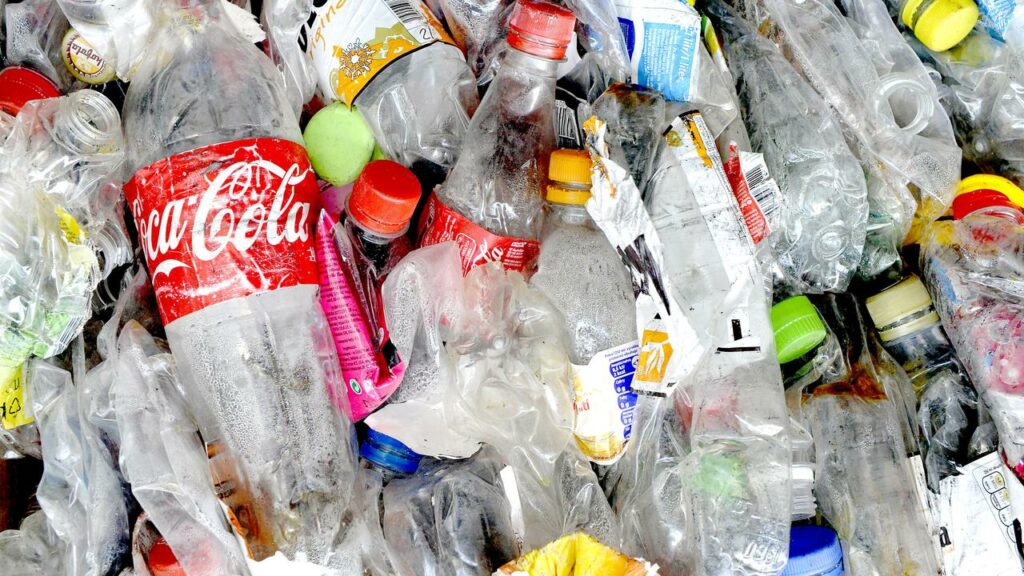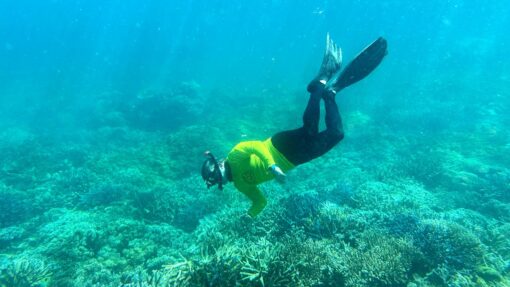Pac-Man enzymes eat into plastic crisis
Tracey Ferrier |

In a Canberra lab, biochemists are busy engineering super-enzymes with an insatiable appetite for plastic.
It’s a process with a nerdy name but ‘depolymerisation’ could soon eat away at the world’s plastics crisis, allowing for the perpetual re-use of what already exists. In short, there will be no need to draw on more raw materials to create plastics.
Australian National University Professor Colin Jackson likes to explain things in retro gaming terms.
“Plastic is a polymer made up of lots of little building blocks called monomers that are joined together with chemical bonds,” he says.
“The enzyme goes around sort of like Pac-Man, snipping through all those bonds.”
In one hour, a plastic bottle can be reduced to the pristine building blocks of plastic – monomers – in powder form.
That powder can be used to make new products as good as virgin plastic, add nothing to the waste stream and produce fewer carbon emissions than making new material with fossil fuels.
It’s a dramatic advance on traditional recycling, which damages polymer chains and degrades the plastic. As a result most types can only be re-used a couple of times.
Prof Jackson believes enzymatic recycling is a game changer when it comes to the tsunami of plastic swamping the world. The UN Environment Programme estimates global production since the 1950s is in the order of 8.3 billion tonnes.
“All the raw material we will ever need already exists. It’s already been made and it’s in the world, in the rubbish dump,” he says.
“This concept of closed-loop chemical recycling means you make it once and you just keep reusing it infinitely.”
Prof Jackson and his ANU colleagues have already engineered one enzyme that eats PET plastic, the type typically used to package food and drinks.
Crucially, it’s a solution for coloured PET like green Sprite bottles and dark, opaque tomato trays mechanical recyclers won’t touch because when they’re melted for re-use, the result isn’t pretty.
The enzymatic process can separate out the colour, taking it back to the clear PET resin packaging manufacturers want.
The ANU team is also close to having a second enzyme for nylon that should help deal with the estimated 800,000 tonnes of textile waste Australia generates and sends to landfill each year.
Paul Riley is the founder and chief executive of Samsara Eco, a private start-up about to start raising the $US35 million ($49 million) it needs to help build Australia’s first enzymatic recycling plant in or near Canberra.
Fellow shareholders include the Woolworths Group, which plans to turn the first 5000 tonnes of recycled Samsara plastic into product packaging.
Main Sequence Ventures – the CSIRO’s innovation fund – is also a shareholder having provided seed funding. The ANU and the scientists working on a library of plastic-specific enzymes also have stakes in the company.
The PET enzyme has advanced beyond the proof-of-concept stage with the team focused on producing one tonne of resin to be used in commercial product trials this year.
Mr Riley hopes the Canberra plant will be in operation by the middle of next year, with a target output of 20,000 tonnes annually. Planning is underway for a second, larger plant, capable of producing up to 100,000 tonnes.
French biotech company Carbios is at the vanguard of enzymatic recycling globally, having opened a demonstration plant in central France last year.
Last month, it said it was satisfied its technology was ready for industrial scale up.
The company intends to operate at significant capacity by 2025, the date by which major industrial players are aiming for 100 per cent recyclable and recycled packaging, chief executive Emmanuel Ladent says.
Mr Riley says Samsara Eco is hot on the French company’s heels.
He’s aiming for Samsara Eco to eventually gear up to process one million tonnes of plastic a year.
But even that long-term goal would only equate to 0.25 per cent of the annual world market.
“There’s 400 million tonnes of plastic made every year and we keep making more,” Mr Riley says.
“Then you realise Samsara has to succeed and every other technology has to succeed as well. The scale of the problem is just so big, it is scary.”
AAP


